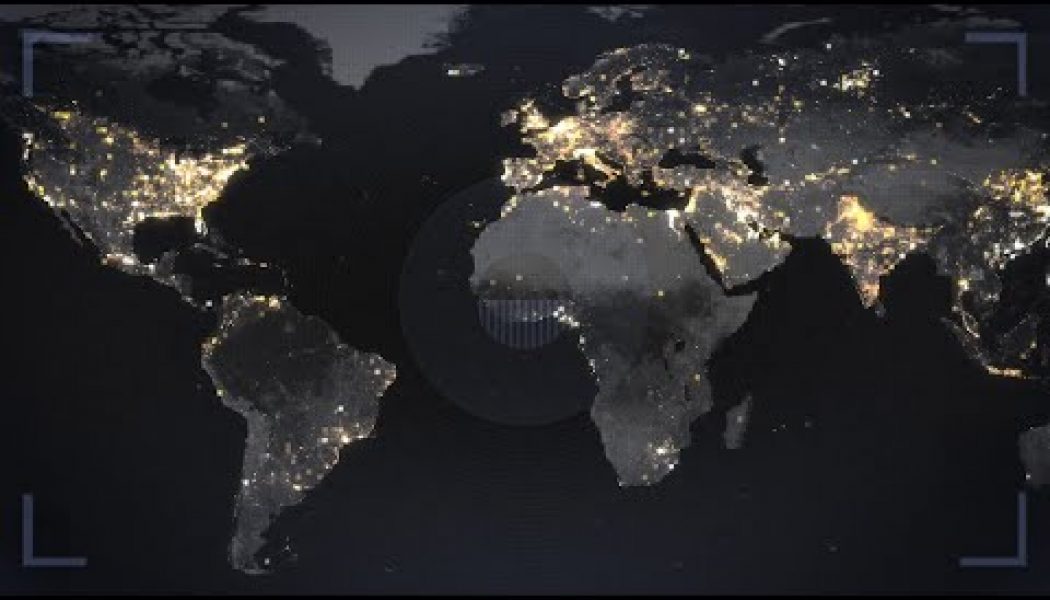

Lower rainfall levels than usual have also led to lower water levels in the lake. This large population uses a lot of water, so the water level in Lake Meade has become lower during this time, too. The counties surrounding the city of Las Vegas have also grown in population, so the whole urban area has spread this is called urban sprawl.

Explain that the population of the city of Las Vegas grew from about 160,000 in 1970 to 600,000 in 2010. Invite a volunteer to read aloud the caption for the paired images.
 Why do you think the city has grown? What would attract new residents? (Answers will vary but may include abundant jobs, a growing economy, affordable housing, and an appealing climate.). How has Lake Meade changed? (It was smaller in 2007 than it was in 1984.). How much do you think the city has grown: doubled, tripled, or quadrupled? (The area of urban development looks more than four times larger in 2007 than in 1984.). What has changed in Las Vegas, Nevada, since 1984? (The city has grown.). Have students calculate the number of years between the two (23). Next, show the side-by-side images of Las Vegas, Nevada, in 1984 and in 2007 and minimize the caption. Point out that the black area to the east of the city is Lake Meade, a reservoir created by the damming of the Colorado River. What landforms do you see? (mountains, lakes). What does the land look like outside of the city? (rugged, mountainous, like a desert). What patterns do you see in the city? (Straight lines are streets the layout is a grid, with some diagonal roads.). Invite volunteers to point to different areas on the image as you use the prompts below. Project the Growth in the Desert image of Las Vegas, Nevada, in 2007 and minimize the caption. Tell students that they will be looking at changes over time in different places on Earth using satellite imagery. Examine the changes in Las Vegas, Nevada, and its surroundings. Ask: What technologies are used to capture images of Earth from above? Write students’ ideas on the board these may include planes, helicopters, kites or balloons with cameras, and satellites.Ģ. Project the satellite image of New York City and the aerial image of LaCrosse, Wisconsin. Have a whole-class discussion about how it’s possible to capture images of Earth from above. Discuss different ways to capture images of Earth from above.
Why do you think the city has grown? What would attract new residents? (Answers will vary but may include abundant jobs, a growing economy, affordable housing, and an appealing climate.). How has Lake Meade changed? (It was smaller in 2007 than it was in 1984.). How much do you think the city has grown: doubled, tripled, or quadrupled? (The area of urban development looks more than four times larger in 2007 than in 1984.). What has changed in Las Vegas, Nevada, since 1984? (The city has grown.). Have students calculate the number of years between the two (23). Next, show the side-by-side images of Las Vegas, Nevada, in 1984 and in 2007 and minimize the caption. Point out that the black area to the east of the city is Lake Meade, a reservoir created by the damming of the Colorado River. What landforms do you see? (mountains, lakes). What does the land look like outside of the city? (rugged, mountainous, like a desert). What patterns do you see in the city? (Straight lines are streets the layout is a grid, with some diagonal roads.). Invite volunteers to point to different areas on the image as you use the prompts below. Project the Growth in the Desert image of Las Vegas, Nevada, in 2007 and minimize the caption. Tell students that they will be looking at changes over time in different places on Earth using satellite imagery. Examine the changes in Las Vegas, Nevada, and its surroundings. Ask: What technologies are used to capture images of Earth from above? Write students’ ideas on the board these may include planes, helicopters, kites or balloons with cameras, and satellites.Ģ. Project the satellite image of New York City and the aerial image of LaCrosse, Wisconsin. Have a whole-class discussion about how it’s possible to capture images of Earth from above. Discuss different ways to capture images of Earth from above.







 0 kommentar(er)
0 kommentar(er)
